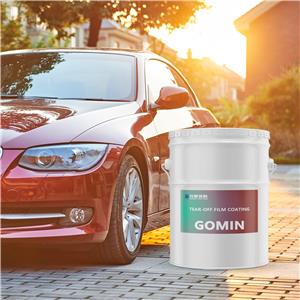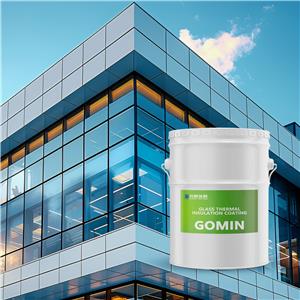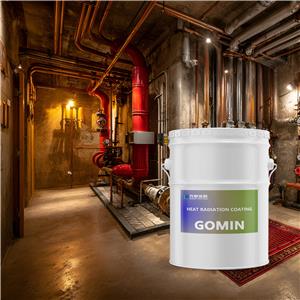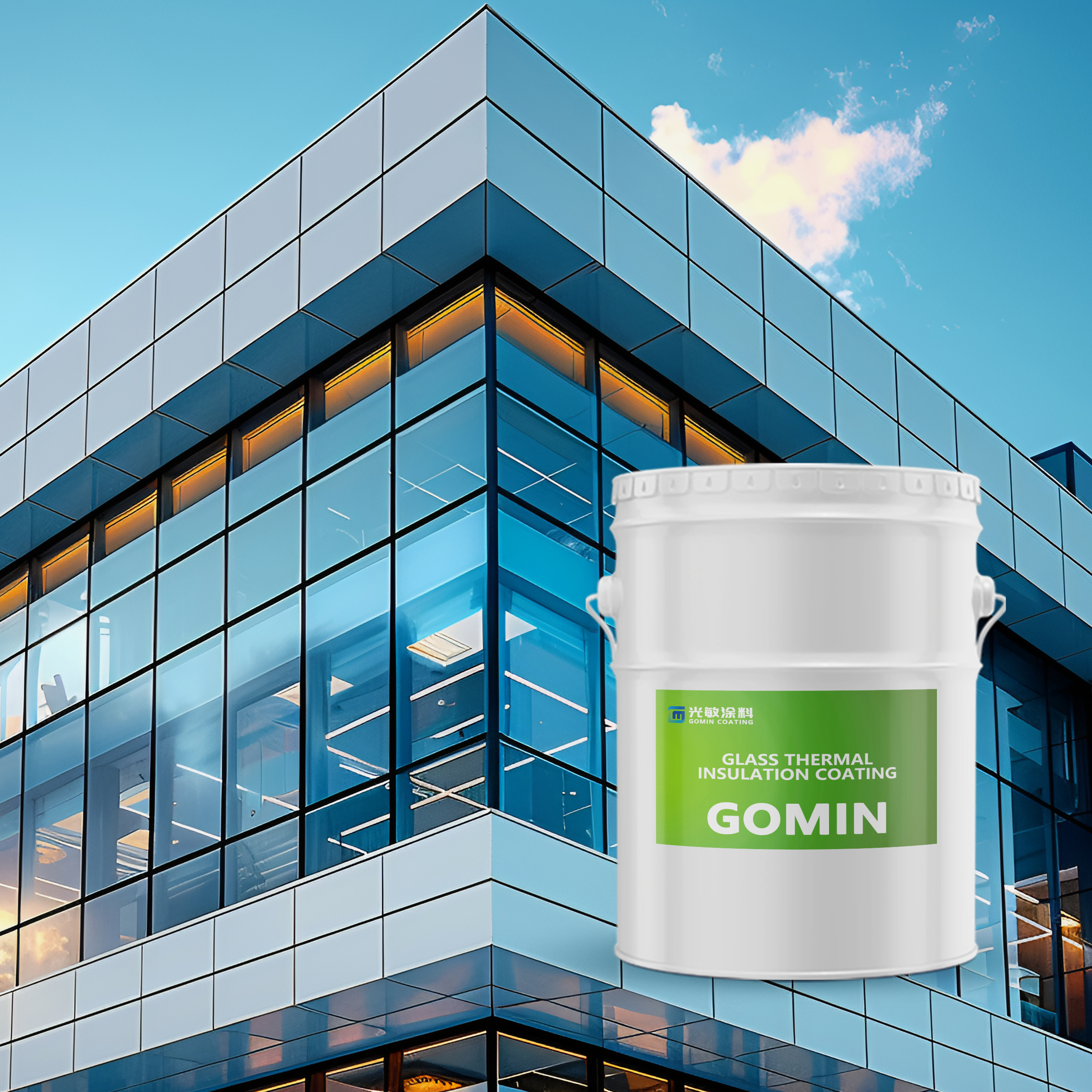
GM-BL Glass Nano Thermal Insulation Coating
It boasts excellent outdoor weather resistance, self-cleaning properties, adhesion, coating elasticity, high-temperature resistance without softening, and low-temperature resistance without brittleness. It is particularly suitable for scenarios such as roofs, exterior walls, pipelines, and oil pipelines, meeting the needs of thermal insulation, cooling, waterproofing, anti-corrosion, and decorative renovation. The coating can reflect more than 90% of solar heat, reducing roof temperature. With an emissivity of over 90%, it rapidly dissipates heat accumulated on the roof, keeping the roof cool.
Product Characteristics
The nano thermal insulation and waterproof integrated coating is a radiation-type thermal insulation paint based on ultra-fine particle size organosilicon copolymerized acrylic. The coating contains a large amount of inorganic metal oxides, polycrystalline compounds, and thermal control technology. It boasts excellent outdoor weather resistance, self-cleaning properties, adhesion, coating elasticity, high-temperature resistance without softening, and low-temperature resistance without brittleness. It is particularly suitable for scenarios such as roofs, exterior walls, pipelines, and oil pipelines, meeting the needs of thermal insulation, cooling, waterproofing, anti-corrosion, and decorative renovation. The coating can reflect more than 90% of solar heat, reducing roof temperature. With an emissivity of over 90%, it rapidly dissipates heat accumulated on the roof, keeping the roof cool.
Application Scope
Roofs:Thermal insulation for concrete roofs, color steel tile roofs, glass houses, and glazed tile roofs.Exterior Walls:Waterproofing, thermal insulation, and decoration for various substrate exterior walls.Waterproofing:Roof waterproofing and thermal insulation with higher water resistance requirements.Wear Resistance:Roof waterproofing, thermal insulation, and decoration with higher wear resistance requirements, outperforming acrylic flooring in wear resistance.Weather Resistance:Can replace traditional anti-corrosion topcoats, providing excellent thermal insulation while maintaining good weather resistance.Self-Cleaning:Used for various industrial equipment such as electrical cabinets, silos, pipelines, oil tanks, and containers for thermal insulation and cooling, while enhancing self-cleaning properties.
Performance Parameters
Physical Properties Item | Specification | |
Film Appearance | Normal | |
Drying Time | Surface dry <0.5h | |
Room Temperature Curing/h | Adhesion (Cross-cut Method, 1mm)/Grade: 0 | |
Hardness | ≥5H | |
Scratch Resistance | No scratches at 500g | |
Wash Resistance | 10,000 cycles without exposing the base | |
Water Resistance | Indoor type: 100h, Outdoor type: 500h | |
Alkali Resistance (5% Saturated Ca(OH)2 Solution) | Indoor type: 72h, Outdoor type: 300h | |
Acid Resistance (Acetic Acid Solution) | Indoor type: 72h, Outdoor type: 300h | |
Artificial Weathering Resistance (3000h) | Appearance | No blistering, No wrinkling |
Gloss Loss/% | 0 | |
Chalking/Grade | 0 | |
Adhesion/Grade | 0 | |
Technical Indicators
Item | Specification |
Coating Density | 1.35kg/L |
Dry Film Time | At 26°C, 40% humidity: Surface dry 2h, Complete dry 4h |
Breathability | 3-5 Perms |
Water Absorption Rate | 3.5% |
Tensile Strength | 8.38MPa |
Elongation Rate | >76% |
Solar Reflectance | 90% |
Near-Infrared Reflectance | 90% |
Emissivity | 90% |
Change Rate of Solar Reflectance After Pollution | <15% |
Construction Instructions
▊ Surface Prearation
Dust, mud, grease, stains, and moss on the construction surface must be removed. Ensure the surface is clean and dry. Concrete roofs should be flat; if necessary, repair and level them with mortar first. Absorptive substrates such as concrete should be pre-treated with a primer to enhance surface hardness, strength, and to solidify dust.
▊ Construction Instructions
(1) Follow the construction flow chart for processing.
(2) Apply two coats of Xibo Nano Thermal Insulation Coating, with a coating thickness of ≥0.3mm.
(3) If necessary, add a layer of anti-crack fabric as an intermediate layer between the two coats of Xibo Nano Thermal Insulation Coating.
(4) Depending on project requirements, the coating can be tinted before application. Application methods include spraying or rolling.
▊ Construction Steps
(1) According to the planned usage for the day, mix Part B into Part A in a 1:1 ratio and shake for 1-2 minutes.
(2) Use a scraper to remove any attachments on the glass surface and protect the window frames with trace-free masking tape.
(3) Polish the glass surface again using glass polishing powder. This step is particularly necessary for areas with severe oil contamination on the glass surface.
(4) Use a small amount of detergent water for the final cleaning of the glass, wipe it clean, and let it air dry naturally.
(5) Apply the mixed thermal insulation coating at a rate of 20-25 grams per square meter. Place the mixed coating in a trough and use a sponge brush to evenly coat the glass. Finish from top to bottom and allow it to level and dry. Avoid touching the surface after construction, and refrain from washing for 3-5 days to allow for stable curing. Normal daily cleaning and washing activities can be carried out afterward.
▊ Storage and Packaging
Item | Requirements |
Storage Conditions | Store in a cool, dry place |
Packaging Specifications | 1 kg/bottle, 25 kg/drum |
▊ Precautions
(1) Ensure there is no sedimentation or layering before use; only proceed with construction if the product is uniform.
(2) Stop construction if the ambient temperature is below 5°C or the humidity exceeds 80%.
(3) Do not add any organic solvents or thinners, such as thinner water or gasoline, for dilution.
(4) The coating reaches its optimal performance 15 days after drying. Avoid extreme performance testing during this period.
(5) For areas with significant structural deformation (e.g., cracks), it is recommended to use diamond fiber cloth or hexagonal fiber mesh to reduce the risk of re-cracking. (For example, a system with diamond fiber cloth has a fracture elongation rate of 110%, which is 6.4 times greater than a system with polyester fabric.)
(6) Ensure no rainfall within 24 hours before outdoor construction. Construction is best done in the morning or evening to avoid rapid curing due to hot weather. For indoor construction, control the ambient temperature to below 30°C.
(7) Under normal construction conditions, no thinner is required. If construction is carried out in high temperatures above 30°C, add thinner at a ratio of 10%~50%. Add it gradually and do not exceed 50% of the total usage.








